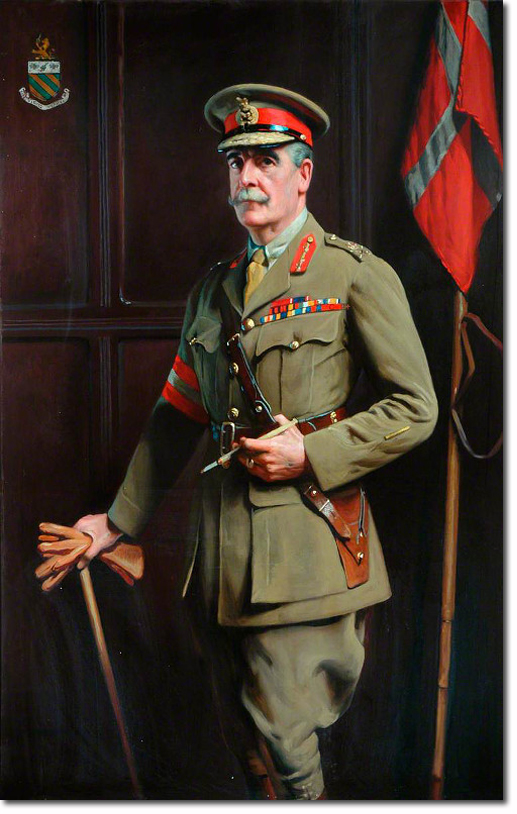|
|


|
|
Edward Stanislaus Bulfin was born in Ireland on 6 Nov 1862. He was the second son of Patrick Bulfin and Teresa Clare Carroll, and grandson of a former mayor of Dublin. The family home was Woodtown Park, Rathfarnham, Co Dublin. Edward was educated at Stonyhurst and Kensington Catholic Public School. He briefly attended Trinity College, Dublin before entering the Armagh Militia and then the 19th Regiment in 1884. He first saw action in Burma in 1889 and then fought in the Boer War as brigade major of the 9th Brigade. He was presnt at Belmont, Graspan, Modder River, Magersfontein, Rhenoster and Lindley. He served with his regiment from Dec 1901 to the end of the war. In England he left the regiment to follow a staff career. He was AA&QMG in Cape Colony from 1906 to 1910, then returned again to England to command the Essex Brigade. In 1913 he was appointed to the command of the 2nd Infantry Brigade. His appointment as Colonel of the 19th Regiment dated from 28 Oct 1914.
In 1914 he took the 2nd Brigade to Belgium with the BEF. The British army came under intense pressure and in October, Bulfin organised an impromptu force of 6 battalions to lead a counter-attack at Ypres. For halting the German advance he was praised highly by Haig and French. In December he commaned the 28th Division through gas attacks at the 2nd Battle of Ypres and the battle of Loos. He became ill in the autumn of 1915 and had to be sent home. But he returned for the battle of the Somme in July 1916, commanding the 60th Division. This division was sent to Salonika, and Bulfin was promoted to lieutenant-general. He was sent to Palestine to command XXI Corps. He led them well in the 3rd Battle of Gaza which opened up the chance of taking Jerusalem. In the Battle of Megiddo his corps won a stunning victory over the Turks. After the war he remained in the Middle East and was very effective during the Egyptian revolution of 1919 when he organised his flying columns. In 1920, in the UK he was offered the post of Chief of Police in Ireland but turned it down on the grounds that he was an Irishman and a Catholic. He held various staff positions and was promoted to general in 1925. He was married to Mary Frances Lonergan in 1898 and they had two children, Kathleen and Edward. They lived at Boscombe, Bournemouth in Dorset where he died on 20 Aug 1939. Portrait by John Lander displayed in the Green Howards museum. |
Armed Forces | Art and Culture | Articles | Biographies | Colonies | Discussion | Glossary | Home | Library | Links | Map Room | Sources and Media | Science and Technology | Search | Student Zone | Timelines | TV & Film | Wargames